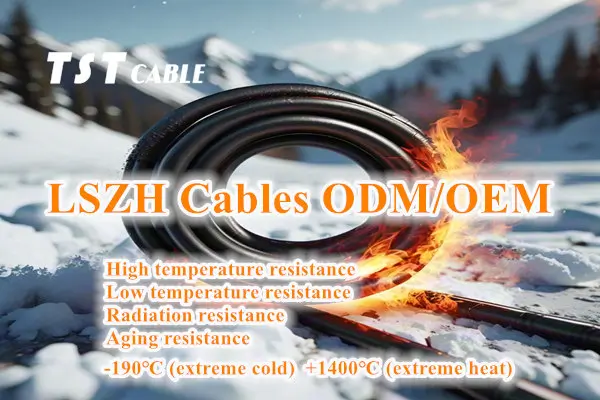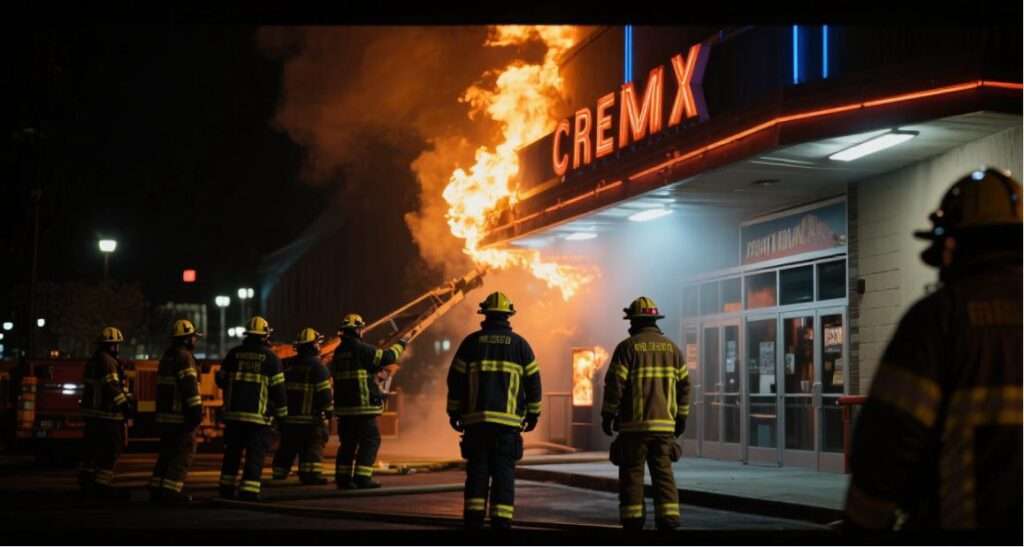You may know that the J-20 is a world-leading fifth-generation stealth fighter, invisible to radar, fast, and accurate. But have you ever considered that inside this “aerial raptor” lie thousands of precision cables, controlling all critical systems like radar, fire control, flight control, and communications, much like a nervous system?
These “nerve lines” are no longer ordinary wires, but rather low-smoke halogen-free flame-retardant cables quietly upgraded by China’s aviation industry. They are not only lightweight, stable, and interference-resistant, but also “life-saving” in extreme environments—in the event of a cabin fire, they will not release toxic gases or produce dense smoke, giving pilots a greater chance of survival.
Today, TST CABLE will delve into how the J-20 uses low-smoke halogen-free cables to create an “airborne safety fortress.”
I. What do fighter jets fear most? Not missiles, but “toxic smoke suffocation.”
Imagine: A J-20 is performing a mission at 10,000 meters altitude when a short circuit suddenly causes a fire. If traditional PVC cables were used, a single burst of combustion would release toxic hydrogen chloride gas and billowing black smoke. In the confined cockpit and equipment bay, a pilot could be poisoned and rendered unconscious within seconds, with no time to eject.
Worse still, these acidic gases corrode avionics—radar malfunctions, flight control system failures, data link interruptions—turning the entire aircraft into a “lump of iron” in an instant.
But the J-20 is different. Its entire wiring system extensively uses military-grade low-smoke halogen-free flame-retardant cables (LSZH). When burning, they produce almost no toxic gases, produce very little smoke, and have a light transmittance exceeding 60%, buying the pilot precious time to escape.
II. How “Hardcore” are the J-20’s Cables? The standards are even stricter than those for aerospace applications. Civilian low-smoke halogen-free cables adhere to national standards, and automotive cables follow ISO standards. However, the low-smoke halogen-free cables used in the J-20 fighter jet, from TST CABLE, employ both GJB (National Military Standard) and aviation industry specifications, representing “hellish” requirements:
GJB 773A / GJB 1916: These stipulate that cables must pass over a dozen environmental tests, including salt spray, mold, damp heat, low pressure, vibration, and impact.
Flame retardant performance: Must pass the IEC 60332-1 single-strand vertical burning test, with a flame self-extinguishing time ≤ 5 seconds.
Low-smoke halogen-free indicators: Halogen acid gas release < 5 mg/g, smoke density and light transmittance > 60%.
Operating temperature range: -55℃ to +125℃, adapting to extreme temperature differences from extremely cold plateaus to the high-temperature engine zone.
More importantly, the J-20 is extremely sensitive to weight. Every kilogram of weight reduction can increase the range by several kilometers. Low-smoke halogen-free cables use cross-linked polyolefin materials, which are 15%~20% lighter than traditional PVC while maintaining higher insulation strength—a win-win situation of lightweight design and high reliability.
III. Real-world Applications: From “Brain” to “Wings,” Cutting-Edge Technology Everywhere
1. Active Electronically Scanned Array Radar (AESA): Anti-jamming is Key
The J-20’s “eyes”—the distributed aperture radar and the nose-mounted AESA radar—require high-speed transmission of massive amounts of data. Any electromagnetic interference can lead to target loss.
Solution? Shielded low-smoke halogen-free micro-coaxial cable: Double shielding with an outer copper braided mesh and aluminum foil, and an inner core made of low-dielectric-constant halogen-free material, ensuring both signal purity and fire safety.
2. Flight Control and Avionics Systems: Absolutely No “Loss of Connection”
The power supply and signal lines for core modules such as the flight control computer, inertial navigation system, and data bus all use fire-resistant low-smoke halogen-free cables (WDZN type). Even in the event of a localized fire, circuit integrity can be maintained for more than 90 minutes, ensuring the pilot’s safe return.
3. Weapon Loading and Launch System: Millisecond Precision
The launch command for the PL-15 long-range air-to-air missile relies on the control cables within the vertical stabilizer and wing roots. These lines must operate stably under high overload and strong vibration.
The J-20 uses armored low-smoke halogen-free flexible cables, reinforced with an aramid fiber layer, increasing tensile strength by three times while maintaining bending flexibility, perfectly adapting to the complex wiring space within its stealth design.
IV. Domestic Breakthrough: Breaking the European and American Monopoly, Chinese-Made “Neuron Cables” Take to the Skies
In the past, high-end aviation low-smoke halogen-free materials were long monopolized by companies such as DuPont (USA) and Leoni (Germany). A single imported special cable was as expensive as gold.
However, in recent years, companies such as TST CABLE and TST SEAL have achieved technological breakthroughs, successfully developing domestically produced low-smoke halogen-free aviation cables that meet GJB standards, and have passed installation verification on key models such as the J-20 and Y-20.
According to the *China Aviation News*, subsequent batches of the J-20 have fully adopted domestically produced low-smoke halogen-free cables, reducing costs by 40% and shortening the delivery cycle from six months to one month, truly achieving “independent control.”
V. Future Trends: Evolving Towards “Intelligence + Integration” The next-generation sixth-generation fighter jet is already in the planning stages, and the TST cable system is also being upgraded:
Fiber optic composite cables: Replacing electrical signals with optical signals, resulting in greater bandwidth and stronger anti-interference capabilities;
Flexible printed circuits (FPC) + low-smoke halogen-free substrate: Further weight reduction, adapting to curved fuselages;
Embedded sensor cables: Real-time monitoring of temperature, stress, and aging status, enabling predictive maintenance.
The J-20’s stealth capability is not just about its external design, but also about the ultimate pursuit of detail. Those unseen low-smoke halogen-free cables silently protect every takeoff and return. They are not flashy, yet they are matters of life and death; they are not ostentatious, yet they are the cornerstone of combat power.
On the journey of the Chinese Air Force towards “world-class” status, it is these “invisible heroes” who uphold the safety bottom line of this great power’s heavy equipment.
Also available in:
English





